As we all know, Amazon released the first generation Kindle in 2007. Users can look through magazines, paper and other content on it.
This kind of device is adopted the e-ink technology, namely electronic ink technology, which is designed as a low-power and paper-like display, currently owned by the Massachusetts-based E Ink Corporation.
E-ink display appears in various industries and why it is so popular? Let us see the advantages of it.
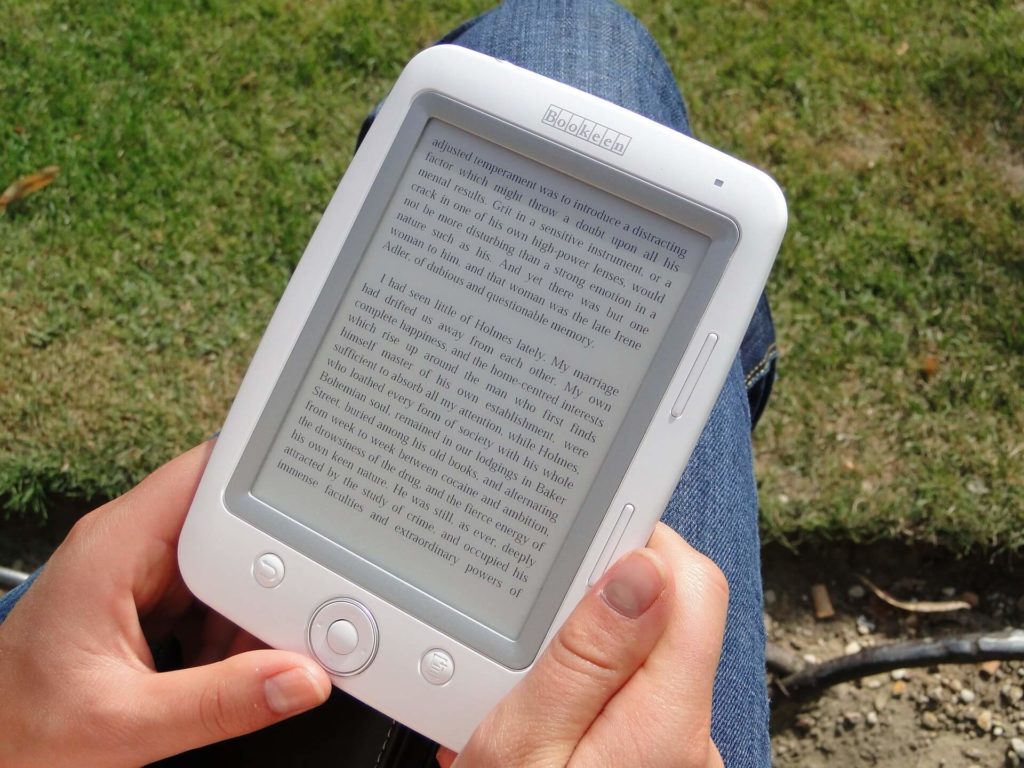
- The Features of E-ink Display -
- Bistability
This feature refers to the fact that an image is retained on the e-ink screen without any energy consumption unless there is any change on it. For example, only when a reader wants to turn to a new page on Kindle, do the device will consume a little power. In other words, bistability is the important factor that a device with e-ink technology has long battery life.
- Reflectiveness
Like LCD or LED, those kinds of the traditional screens would emit the light while e-ink screens reflect light surrounding, which is another key reason why e-ink displays needn’t to be charged for a long time. In addition, it is beneficial for users to relieve eye fatigue and feel more comfortable compared with using a device with LED or LCD.
- Durability
The traditional displays are composed of glass-based TFT while e-ink displays are composed of plastic-based TFT. That means the e-ink displays are lighter and thinner than traditional displays. What’s more, the device with plastic-based TFT is less destroyed and more solid due to the accidental drop or strike.
- Readability
E-ink display has a very wide angle of visibility and a very high contrast so even though at the strong light, people can see the content on the screen clearly, resembling true paper while LED or LCD would reflect the light and people need to adjust several angles to see the content on the screen clearly as soon as possible, which would lead to a bad and inconvenient visual experience for people.
Because of those advantages of the e-ink display, it has wide applications in our daily life.
Now let’s see what benefits does e-ink displays bring to people.
- The Wide Applications of E-ink Display -

- E-ink display for transportation sign
Imagine that if there is a display that shows the real-time bus routes and timetables at the bus stop, passengers would tend to decide whether they wait for the next bus and then control their time well.
At the same time, bus administrators could manage and update the bus schedules remotely. Moreover, thanks to the low energy consumption of e-ink displays, they needn’t to recharge the display to make sure the device works properly every moment, which simplifies the workflow for bus administrators, and saves the maintenance and labor cost.
- E-ink display for road map sign
Like subway stations, airports, libraries, shopping centers even nearby a road, those kinds of places need a direction guide for people to help them find their destinations smoothly.
An e-ink display could navigate people find their way as well as is easy to maintain without too much extra cost. Meanwhile, the information shown on the screen can be changed remotely, which facilitates administrators to make some temporary adjustments for emergent or other situations, like a subway station where a new subway line will be added one day.
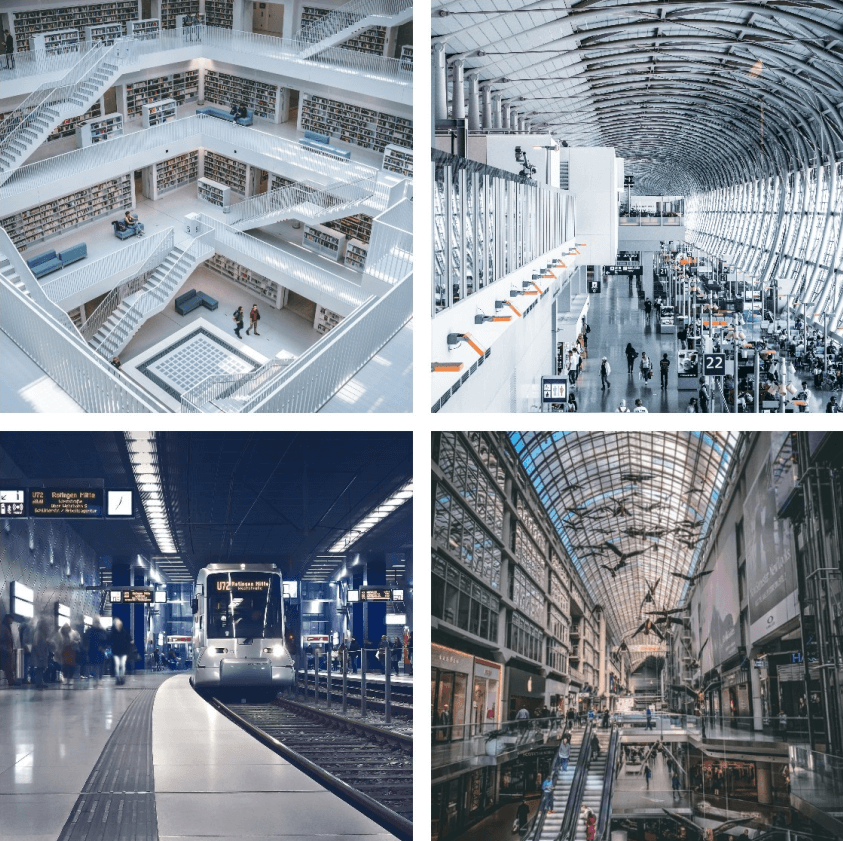
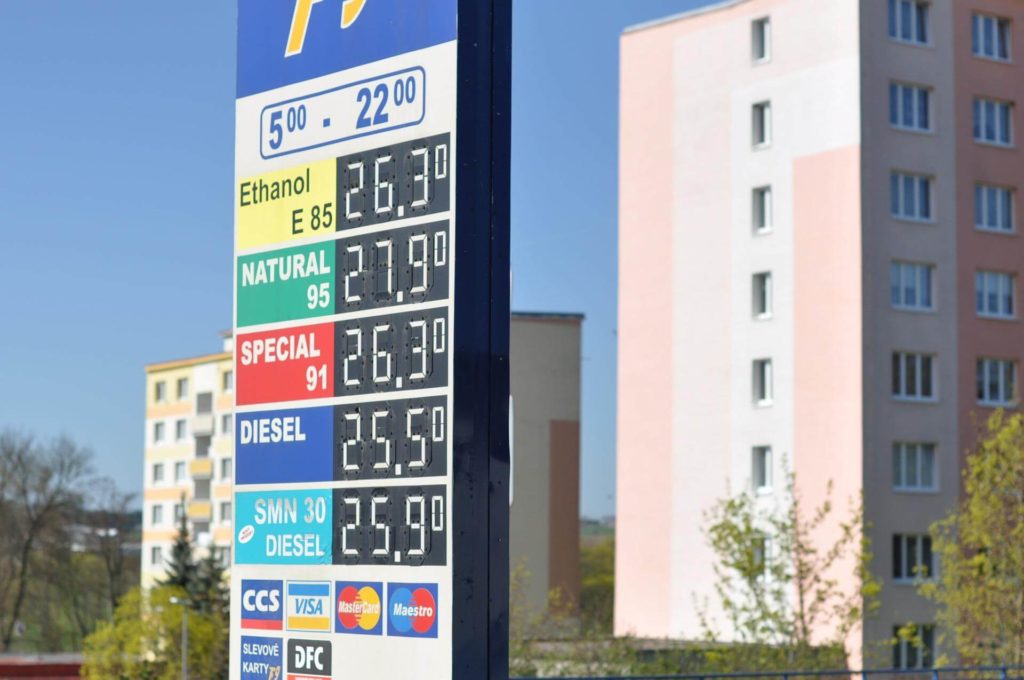
- E-ink display for gas station price sign
Another practical application with an e-ink display is at the gas station. We all know that the gas price is changeable so staff there can use an e-ink display to synchronize the newest information for people at any time.
Additionally, due to the high contrast of the e-ink screen, the stronger the light is, the clearer the image is, which means the screen has high visibility outdoor and people can see the information clearly.
- E-ink display for meeting room signage
It’s common that everyone encounters those situations at the workplace:
- You don’t know which room is available
- You reserved a room in advance but you found the room was occupied occasionally
- A meeting was interrupted because someone want to glance at the status of the room…
Some offices would put up the paper on the wall to show the future events of a meeting room but it can’t update the room schedules in real time and only be replaced the paper by people over and over again.
Other offices might use LCD/LED displays as room signage. It is much better than a paper sign obviously in terms of synchronizing the room schedule but it needs a continuous power supply for function. In other words, it needs complex installation with wires.
So is there a solution with real-time information updates as well as wireless installation? In fact, e-ink display meets those two points and is also applied to conference room signage nowadays.
Just like SyncSign, an e-ink conference room display
- Visualizes the real-time room status
- Synchronizes the future events with an existing calendar system
- Optimizes the meeting room management well and avoids meeting conflicts.
- Lasts for at least 1 year before the next charge because of the low-energy e-ink screen
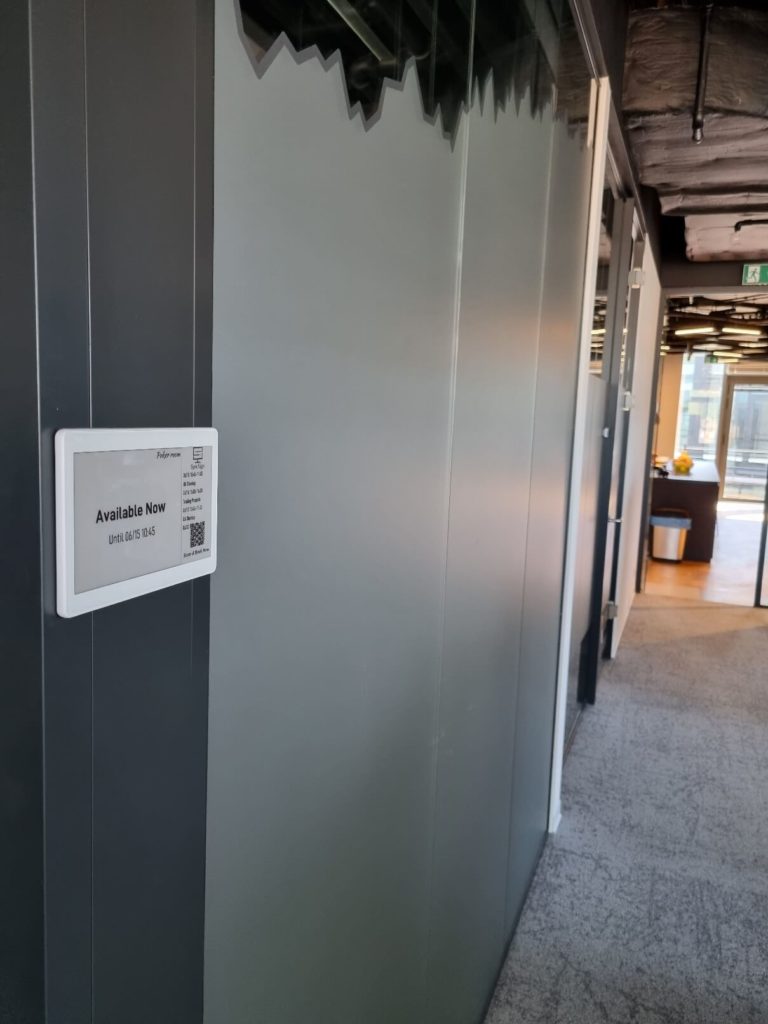
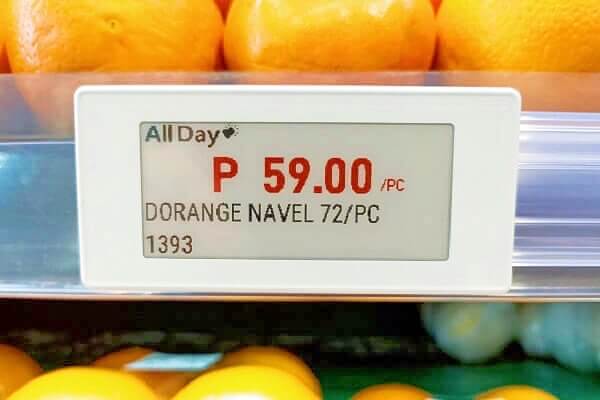
- E-ink display for a digital price tag
In all kinds of retail stores, they would choose paper sign to show the information of commodities, like commodity name, price, promotion, etc.
However, they need to print the a paper price tags, and then write some information on them, take the old ones down, and put the new ones up at last. As you can see, it is not a cost-effective and convenient solution due to the paper resources and labor costs.
Hence, an e-ink display can be a wonderful electronic shelf label solution for this problem. The staff just remotely accomplishes the above-mentioned process from a computer.
Although this way needs to drill staff to learn how to use the system, it could bring much benefits once for all. That means it not only reduces the labor cost, avoids paper waste and saves other expenses but also optimizes the workflow of commodities information management, increasing the staff’s working efficiency.
